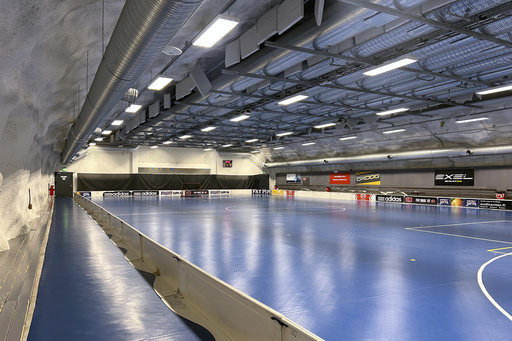In 1944, during World War II, resistance operatives in the Norwegian town of Kongsberg took a bold stand against the occupying Nazi German forces by demolishing a cannon-manufacturing factory. Today, over 80 years later, the town, like much of Norway, is actively gearing up for any future acts of sabotage and preparing for the prospect of armed conflict. Local government officials have revitalized outdated Cold War-era bomb shelters, introduced a modern satellite communication system, and are coordinating with military forces to prepare for potential Western troop deployments in case hostilities arise.
Inspired by the situation in Ukraine, where various sectors contributed to the war effort by repurposing factories and infrastructure, Kongsberg’s Emergency Planning Officer, Odd John Resser, remarked on the importance of whole society pitching in. Breweries made Molotov cocktails, schools were built in protective shelters, and weapons manufacturers accelerated production. This whole-society approach to defense is emerging as a strategy across Nordic countries, where governments are increasing defense budgets and reevaluating their security frameworks.
With ongoing tensions in Ukraine and allegations against Russia for orchestrating sabotage, arson, and cyber warfare, European nations are uneasy about their security and the reliability of the U.S. as an ally. In May, the Norwegian government presented its inaugural national security strategy, acknowledging the gravest threat to its security since World War II and warning of a new era for Norway and Europe.
Prime Minister Jonas Gahr Støre emphasized that the conflict in Ukraine serves as a dire warning. “The events in Ukraine should alert us to strengthen our defense to ensure such occurrences do not happen here,” he explained, reflecting the overarching theme of total defense. In January, Norway revealed its plan to incorporate bomb shelters into new construction projects, reinstating a practice discontinued in 1998.
Sweden has installed its first minister for civil defense, prompted by the invasion of Ukraine. Citizens aged 16 to 70 must be ready to engage in military or civilian support roles, such as firefighting or medical care, during wartime. Finland’s extensive civil defense shelters, accommodating about 86% of its population, stand as a model within the Nordic region. One notable shelter in Helsinki can house 6,000 people, prepared to withstand nuclear fallout with protective infrastructure including hidden beds and sinks behind blast doors.
Moreover, Nordic residents are encouraged to maintain a week’s supply of food and water. A handbook issued by Norway questions citizens on their preparedness for prolonged electricity or water shortages. In Kongsberg, surveys show varied levels of preparedness among residents, with some equipped to sustain more than a week. Katina Bakke, a sports shop employee, stresses the importance of preparedness given Russia’s proximity.
Kongsberg is strategically significant, especially if Northern Europe destabilizes. The municipality, south of Norway’s capital, Oslo, hosts the Kongsberg Group, which manufactures precision weaponry for Ukraine and other European forces. A newly inaugurated factory in 2024 amplifies its output of advanced missiles, making the town crucial in the scenario of a conflict.
Recently, Kongsberg collaborated with military officials to plan logistical and healthcare support for Western forces possibly stationed locally. Such preparation also serves in tackling more probable emergencies like pandemics or severe weather events, according to Resser. A 2007 flood and a 2016 power disruption drill prompted the town’s authorities to reassess vulnerabilities, install backup generators, and secure satellite connectivity.
Previously, challenges with satellite communication systems arose. The original satellite phones had limited connectivity, operable only from impractical locations like graveyards during harsh winters. Subsequent concerns about the provider’s control in emergencies led to choosing a Norwegian supplier over American competitors
Martha Turnbull of the European Centre of Excellence for Countering Hybrid Threats underscores that local empowerment distinguishes Nordic defense strategies. Unlike the reliance on the military alone, local authorities are expected to act promptly in emergencies, supported by civilian and commercial involvement.
Elsewhere in Europe, awareness of the deep-reaching threat from Moscow’s tactics, which could compromise essential infrastructures like energy grids and water supplies, remains mixed. Norway’s Defense Minister Tore O. Sandvik emphasized this threat’s intensification. Resser, reiterating this concern, pointed out suspicious activities at the Kongsberg Group, including attempted sabotage and unauthorized drone flights near sensitive areas.
As Russia’s aggressive maneuvers escalate, complacency in countries distanced from immediate conflict zones raises concerns. Security expert Matthew Redhead notes the rising threat from Russia, urging ordinary citizens and authorities to boost their readiness due to the potential implications, even if currently perceived as distant from frontline crises.


